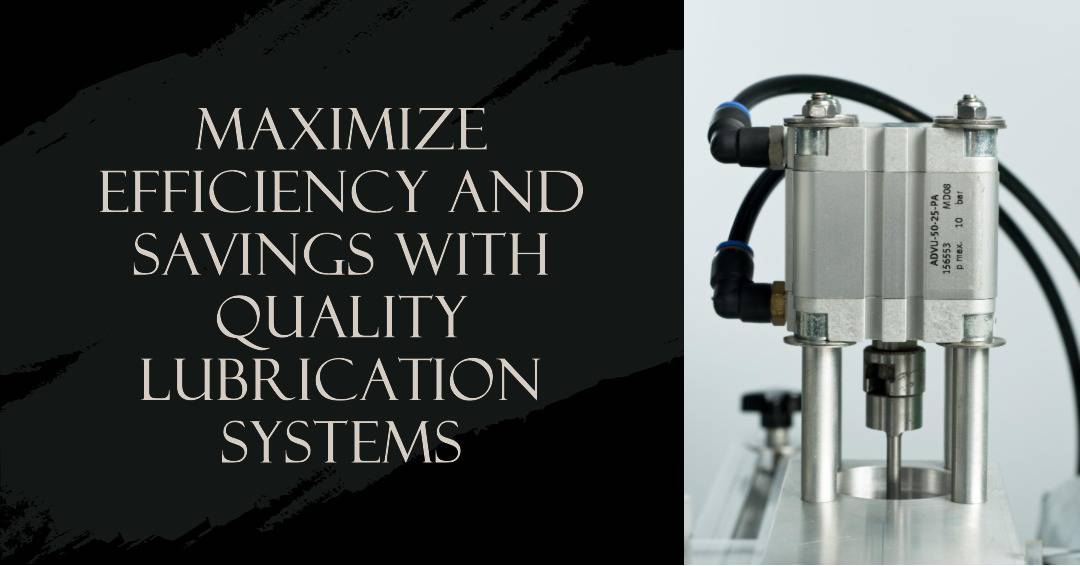Lubrication system will optimal performance.These systems battle friction, wear, and heat, ensuring that machinery runs smoothly and efficiently. However, the realization that not all lubrication systems are created equal is fundamental to unlocking unprecedented levels of operational efficiency.

The Essence of Lubrication
At its core, a lubrication system is designed to deliver lubricant to the moving parts of a machine. This simple yet crucial process reduces friction, minimizes wear and tear, and extends the equipment’s lifespan. There are various types of lubrication systems, each tailored for specific applications and machinery types. However, the focus intensifies when we explore quality lubrication systems characterized by precision, reliability, and innovation.
Quality Lubrication Systems
Quality lubrication goes beyond the basic application of lubricants. It embodies a system engineered with precision, ensuring that the right amount of lubricant is delivered at the right time and to the right place. These systems are characterized by their efficiency, reliability, and the technological innovation embedded in their design. The difference between standard and quality lubrication systems is akin to the contrast between a candle and a laser—both provide light, but the precision, intensity, and application are worlds apart.

Benefits of Quality Lubrication Systems
Enhanced Machinery Efficiency and Performance
Quality lubrication systems ensure that every moving part receives optimal lubrication, reducing friction and enhancing efficiency. The result is machinery that operates at its peak, delivering enhanced performance and productivity.
Reduction in Wear and Tear
With precision lubrication, wear and tear are significantly minimized. The extended lifespan of machinery parts translates to reduced maintenance requirements and operational disruptions.
Energy Savings and Environmental Benefits
Efficient lubrication leads to reduced energy consumption. Moreover, quality systems are often designed with environmental sustainability in mind, minimizing waste and pollution.
Cost Savings on Maintenance and Repairs
The cumulative impact of enhanced efficiency, reduced wear, and energy savings translates to significant cost reductions. Maintenance is less frequent and less intensive, and the need for repairs is markedly reduced.
Applications
In industries ranging from manufacturing to mining, the transformative impact of quality lubrication systems is evident. Companies report not only enhanced operational efficiency but also significant cost savings and reduced environmental impact. The investment in quality lubrication transcends operational benefits, contributing to sustainability and profitability.
Choosing the Right Lubrication System
Selecting a quality lubrication system requires a comprehensive understanding of the machinery’s needs, operational demands, and long-term objectives. Factors such as the type of machinery, operational conditions, and environmental considerations play a crucial role in informing the right choice.1. Manual Lubrication System:
- Characteristic: Requires a person to manually apply the lubricant to the machinery parts. It’s labor-intensive and can be inconsistent due to human error.
2. Single-Line Lubrication System:
- Characteristic: Utilizes a single main line to deliver lubricant from a central source to the machine parts. It’s simple and cost-effective but may not be ideal for complex machinery.
3. Dual-Line Lubrication System:
- Characteristic: Consists of two main lines and is often used for large machines or systems. It’s reliable and can be monitored and controlled remotely.
4. Multi-Line Lubrication System:
- Characteristic: Uses multiple lines to deliver lubricant to various machine parts. It’s complex but allows for precise control and monitoring.
5. Progressive Lubrication System:
- Characteristic: Delivers lubricant in a pre-determined, sequential manner to different parts of the machine. It’s precise but can be complex to manage.
6. Oil Mist Lubrication System:
- Characteristic: Atomizes the oil and delivers it as a mist to lubricate machine parts. It’s efficient for reducing friction but can be expensive to install and maintain.
7. Centralized Lubrication System:
- Characteristic: Centralizes the lubrication process, reducing the need for manual lubrication and ensuring that all parts receive adequate lubrication. It’s efficient but can be expensive to install.
8. Automatic Lubrication System:
- Characteristic: Automatically delivers the right amount of lubricant at the right time without human intervention. It’s highly efficient and reduces maintenance costs but requires an initial investment.
9. Minimal Quantity Lubrication (MQL) System:
- Characteristic: Delivers a minimal amount of lubricant directly to the cutting zone or machine parts. It’s cost-effective and reduces waste but may not be suitable for all types of machinery.
Conclusion
The journey to optimal performance is intricately linked with the embrace of quality lubrication systems. These systems are not just components but integral allies in the quest for operational excellence, cost savings, and environmental sustainability. As we continue to push the boundaries of innovation and efficiency, the role of quality lubrication systems remains central, underscoring the adage that sometimes, it’s the silent components that make the loudest impact.
FAQs on Lubrication Systems
1. What is a Lubrication System?
A lubrication system is a mechanism that delivers controlled amounts of lubricant to multiple parts of a machine while it's operating. This helps in reducing friction and wear, increasing efficiency, and extending the machine's lifespan.
2. Why is a Quality Lubrication System Important?
A quality lubrication system ensures that the right amount of lubricant is delivered to the right place at the right time, reducing wear and tear, enhancing performance, and saving on maintenance costs.
3. How Do I Choose the Right Lubrication System?
Choosing the right lubrication system involves considering the type of machinery, operational conditions, type of lubricant, and specific features needed for efficiency, reliability, and performance.
4. How Often Should I Maintain My Lubrication System?
The maintenance frequency depends on the type of lubrication system and operational conditions. Always follow the manufacturer's recommendations and monitor the system regularly for optimal performance.
5. Can I Install a Lubrication System Myself?
It's advisable to have a professional install the lubrication system to ensure it's set up correctly and safely, although some simpler systems can be installed with the right knowledge and tools.




